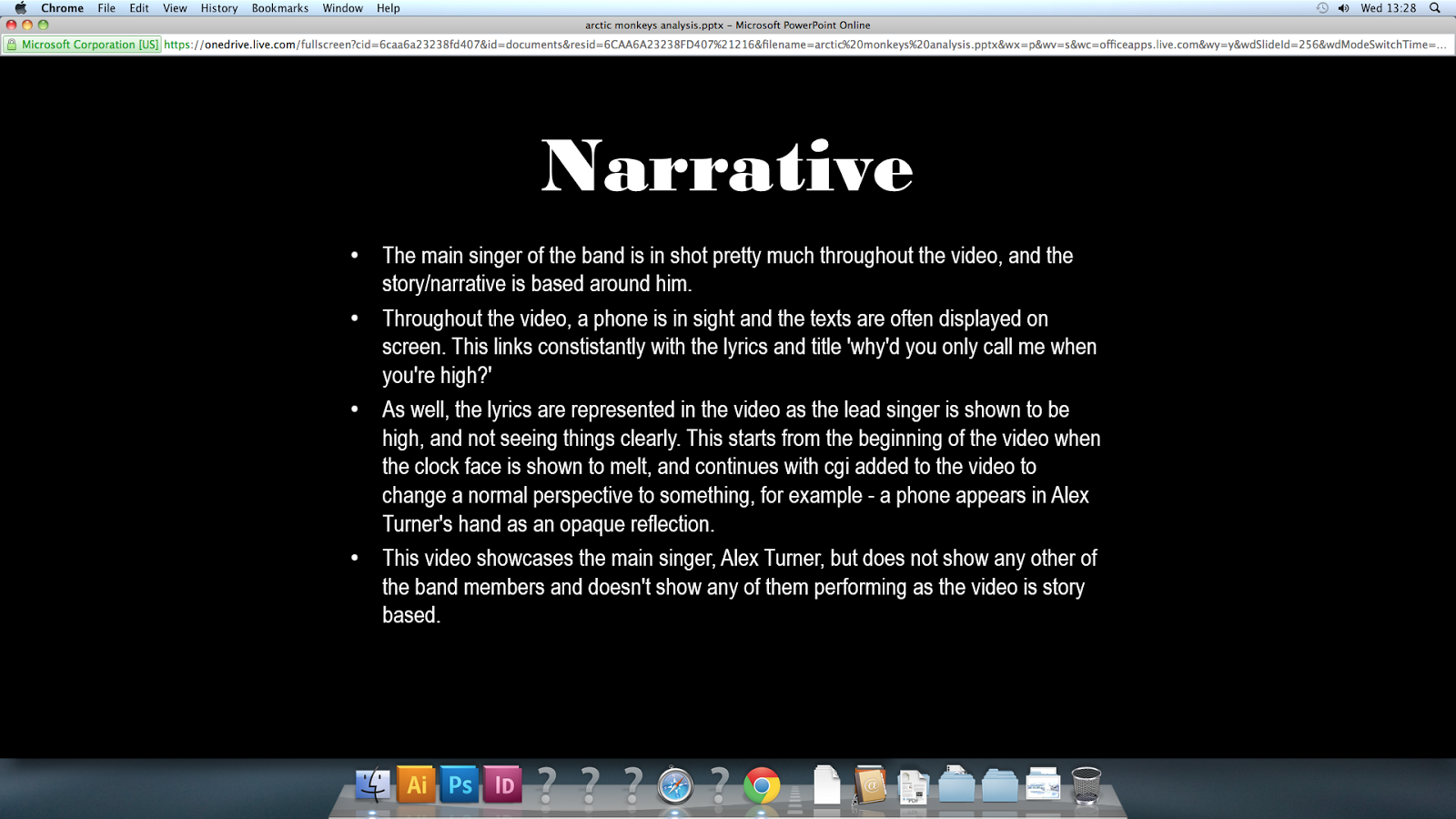As a class, we started by analysing the Gorillaz 'Demon Days' album as it is a very good example of genre and concept-based work. There is a clear recurring theme throughout this album, in their inserts and adverts, which is their unique and specific cartoon styled art work. The genre for this album is alternative pop.
The front cover of this album is noticeably simple, yet still conforms to typical pop branding as all the members of the band feature on it. Because they are shown as cartoons, not only is it a unique idea, but follows the alternative part of the genre they follow. This cartoon monkey style is repeated throughout their videos, posters and CD artwork. This makes the artist very recognisable to the audience, and the repetition, according to Steve Neale, is what makes a music video so successful. It also fulfils the trait of expectation, another feature which makes an artist or brand successful.
This is the first pull out image in the CD case, which follows the style that is on the cover, an example of them following the system of expectation.
Unlike the cover, this has more publicity as the group name and one of their songs features obviously on picture. It's cleverly done as the band name is written like it's graffiti, again following a theme of rebellion which features throughout the album.
Again, a system of expectation is fulfilled as there is the expected band member clearly in centre of this image. The name of the song 'noodle' is featured in foreign language, which may to attract a wider audience or, more likely, this is to make them seem cool or original, as this is a style no other british or american band has.
This is the poster that comes in the CD, which is slightly different from the others yet still conforms to the theme the band have. It shows their 'demon' side, linking to the name of the album.
This is also shown by the image on the front which is a demon monkey, which links as well to the writing on the bottom. 'Fire coming out of the monkey's head' is represented through the smoke coming from a cigarette the monkey is smoking, which continues the theme of rebellion seen throughout the images in the album. It is a very original idea and makes the band recognisable and makes them stand out.





.png)













